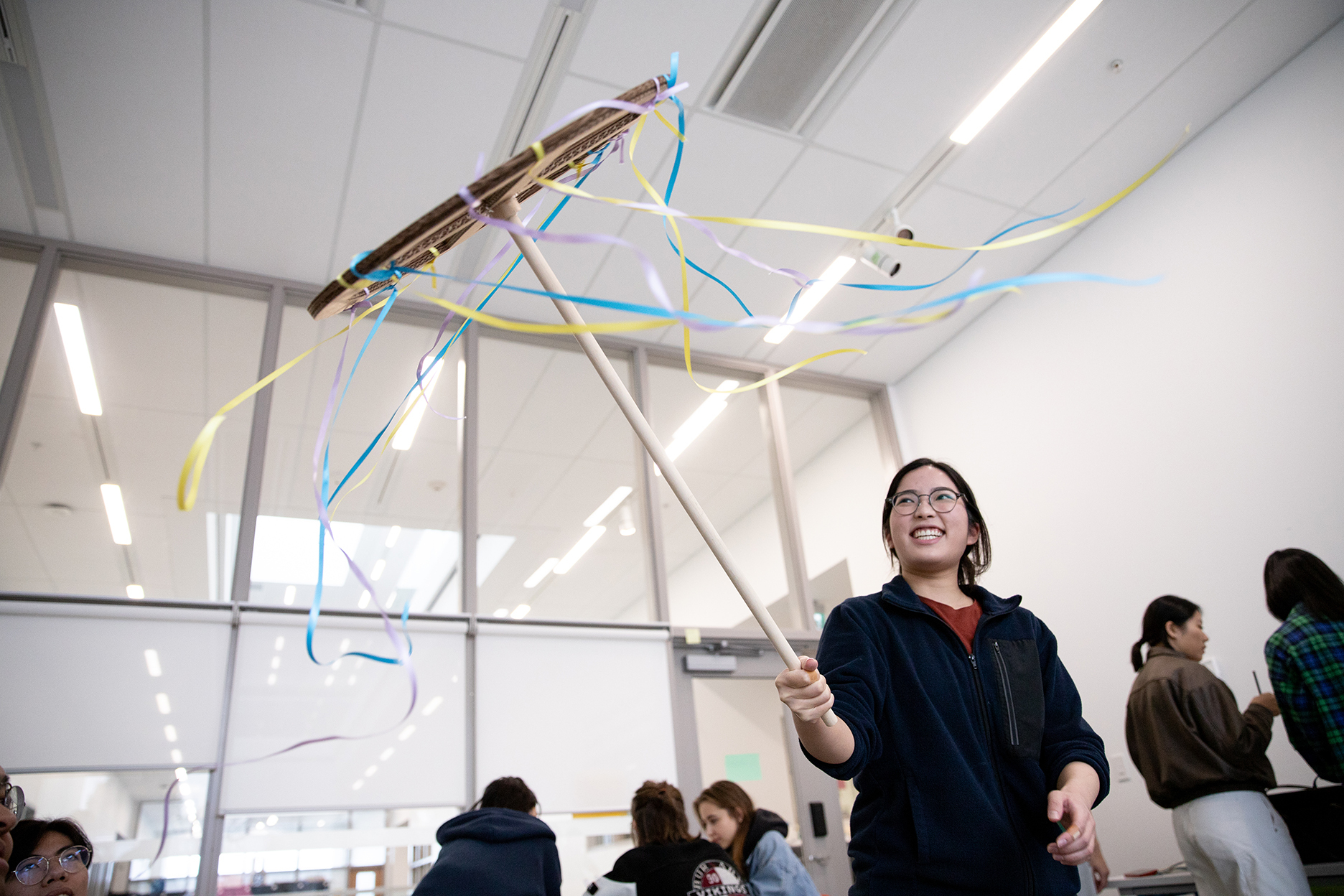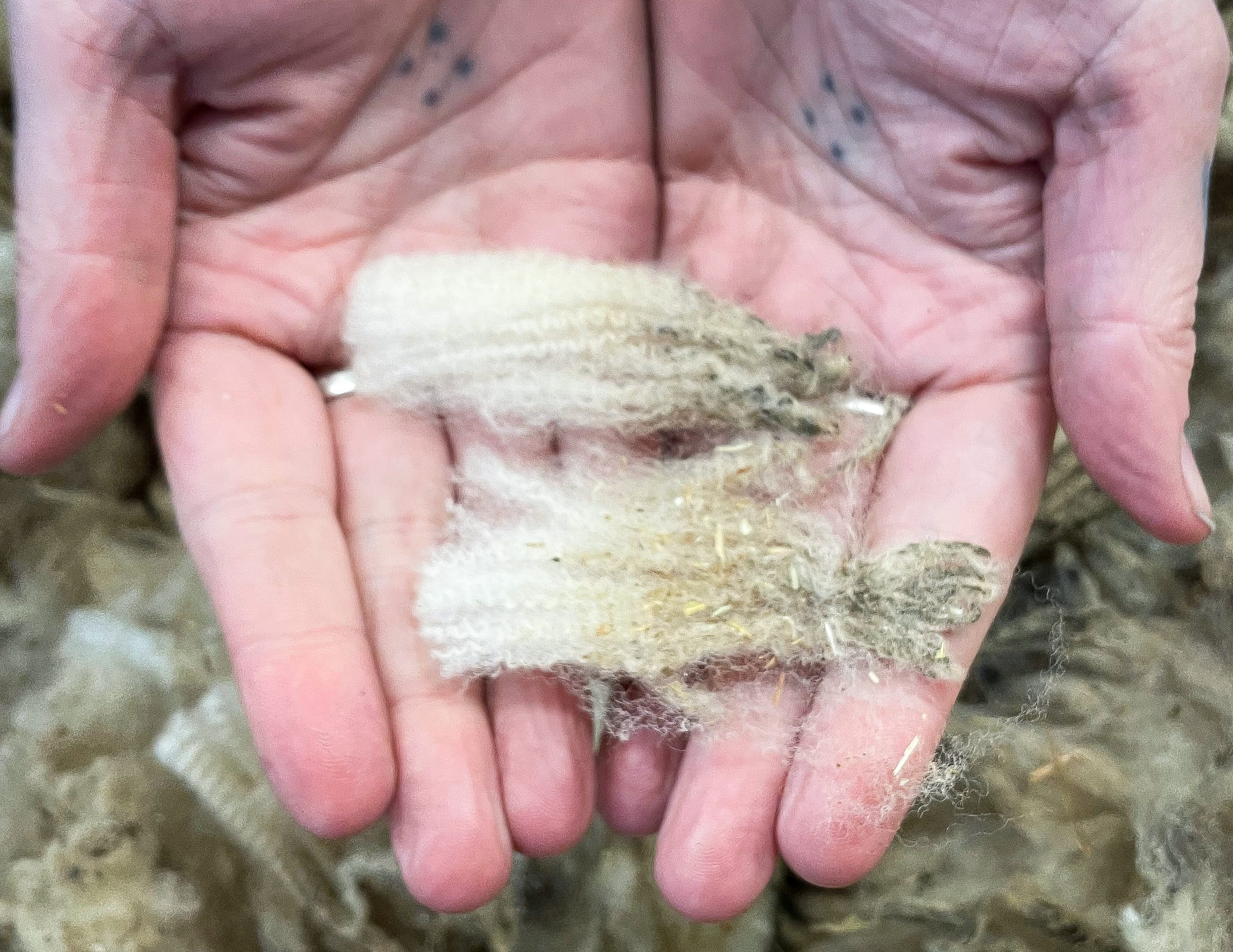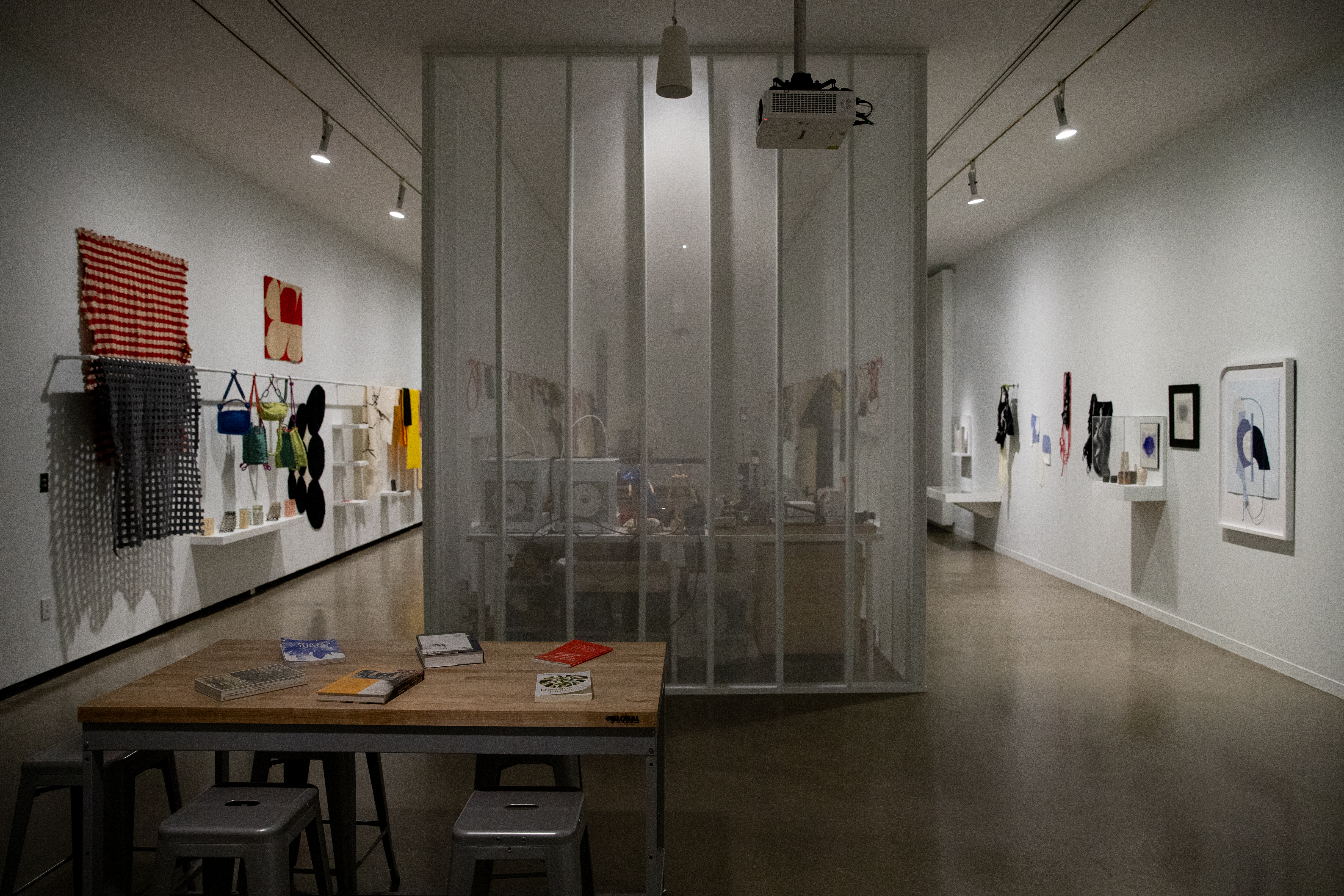Inaugural Industrial Design Open Studio Brings Community Insight to Students’ Capstone Projects
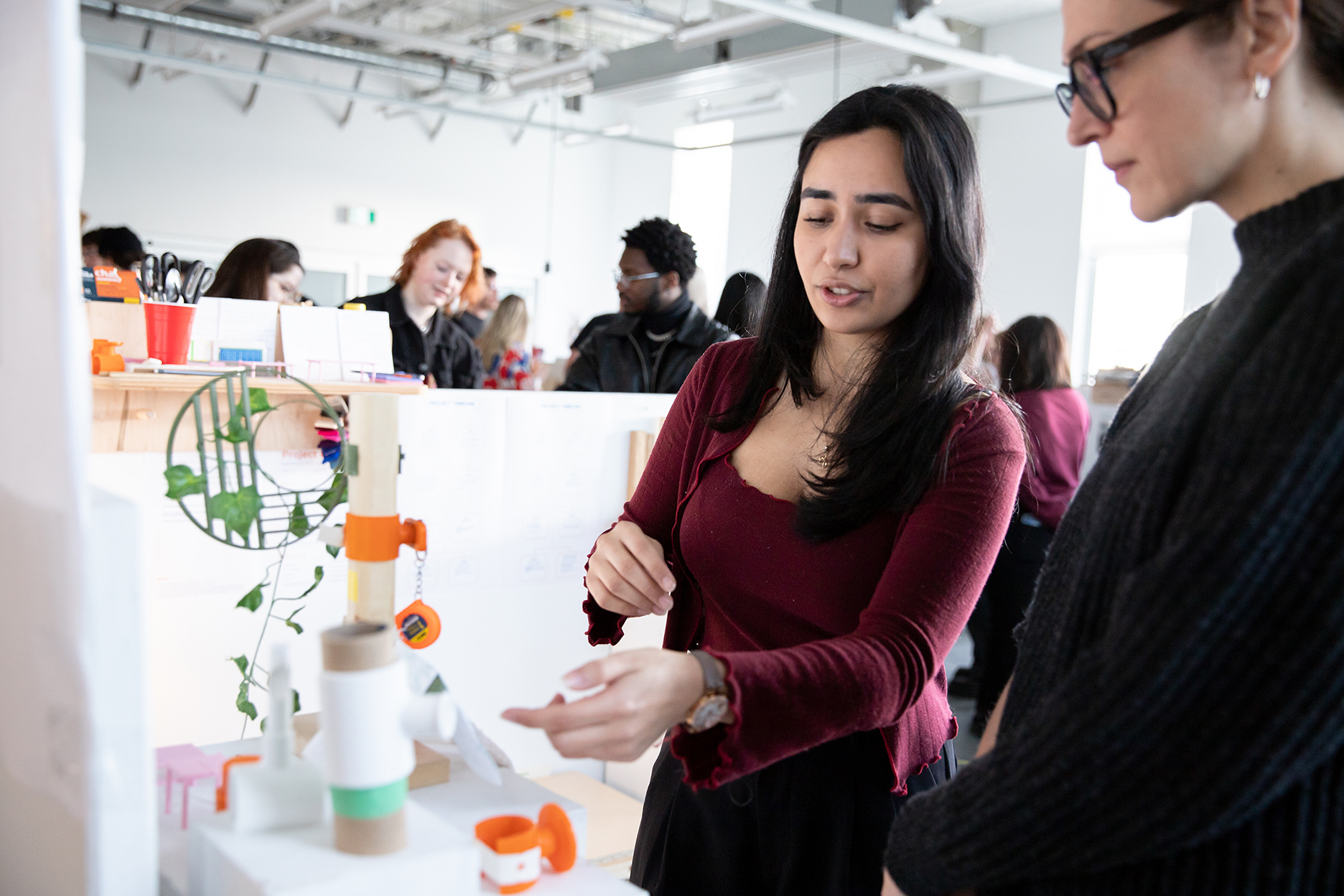
Industrial Design student Aradhita Virmani chats with designer Jenna Hill at the inaugural Industrial Design Open Studio at ECU. (Photo by Perrin Grauer)
Posted on
The event invited students, faculty, alumni and other art and design industry professionals to hear from and offer feedback to fourth-year students about their work.
The inaugural Industrial Design Open Studio at Emily Carr University of Art + Design (ECU) recently brought fourth-year Industrial Design students into conversation with emerging and established creative practitioners from across the university and beyond.
Led by ECU faculty members Charlotte Falk, Hélène Day Fraser and Pablo Mariano, the event showcased students’ work as they prepare for their final push before graduation.
“It’s a very real opportunity for students to get ideas, feedback, and have conversations about their projects at a moment where they still have time to take what they hear and run with it,” Charlotte says. “Their work is far enough along that they’ve got something real to show but is still not entirely finalized and set in stone. The Open Studio was timed intentionally to allow them to network and connect, but also to have meaningful, productive conversations about their work with people they might not otherwise encounter.”
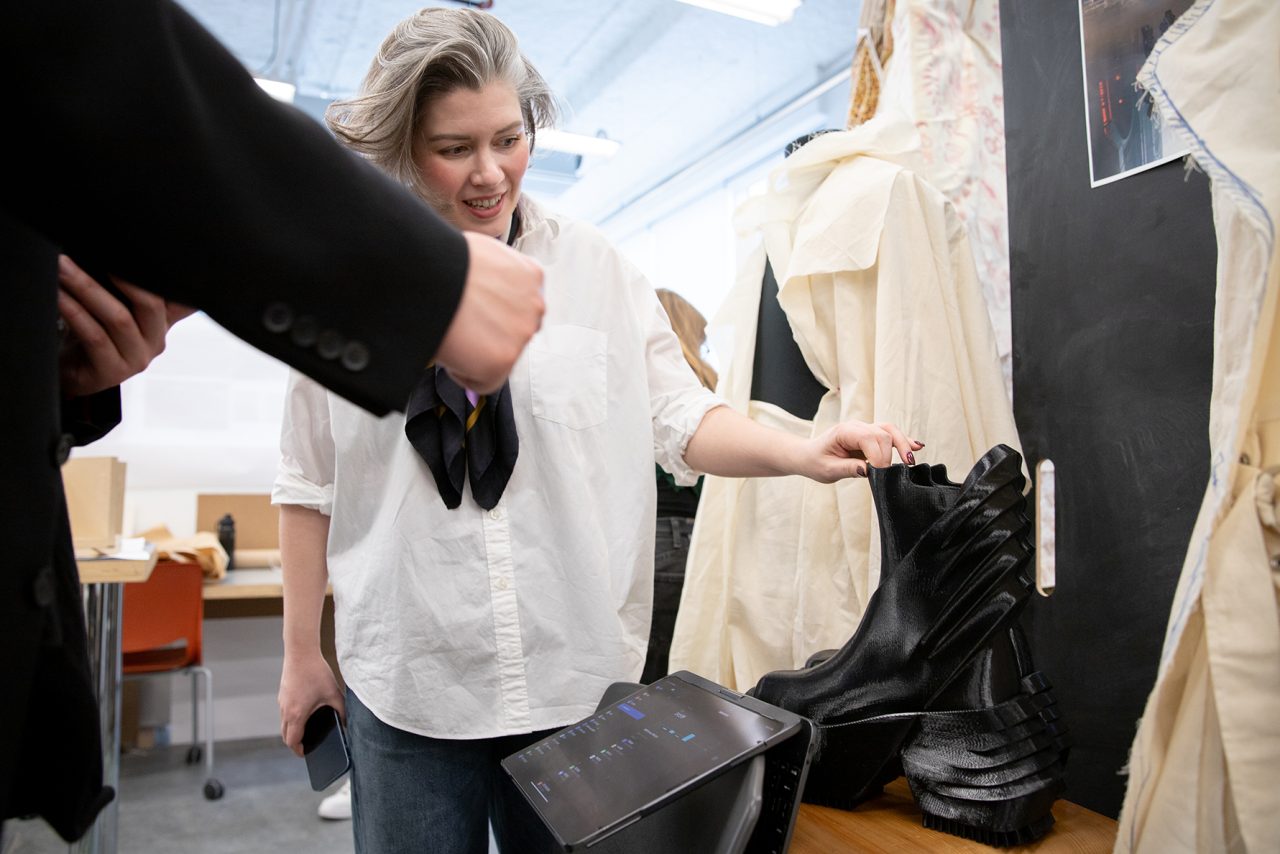
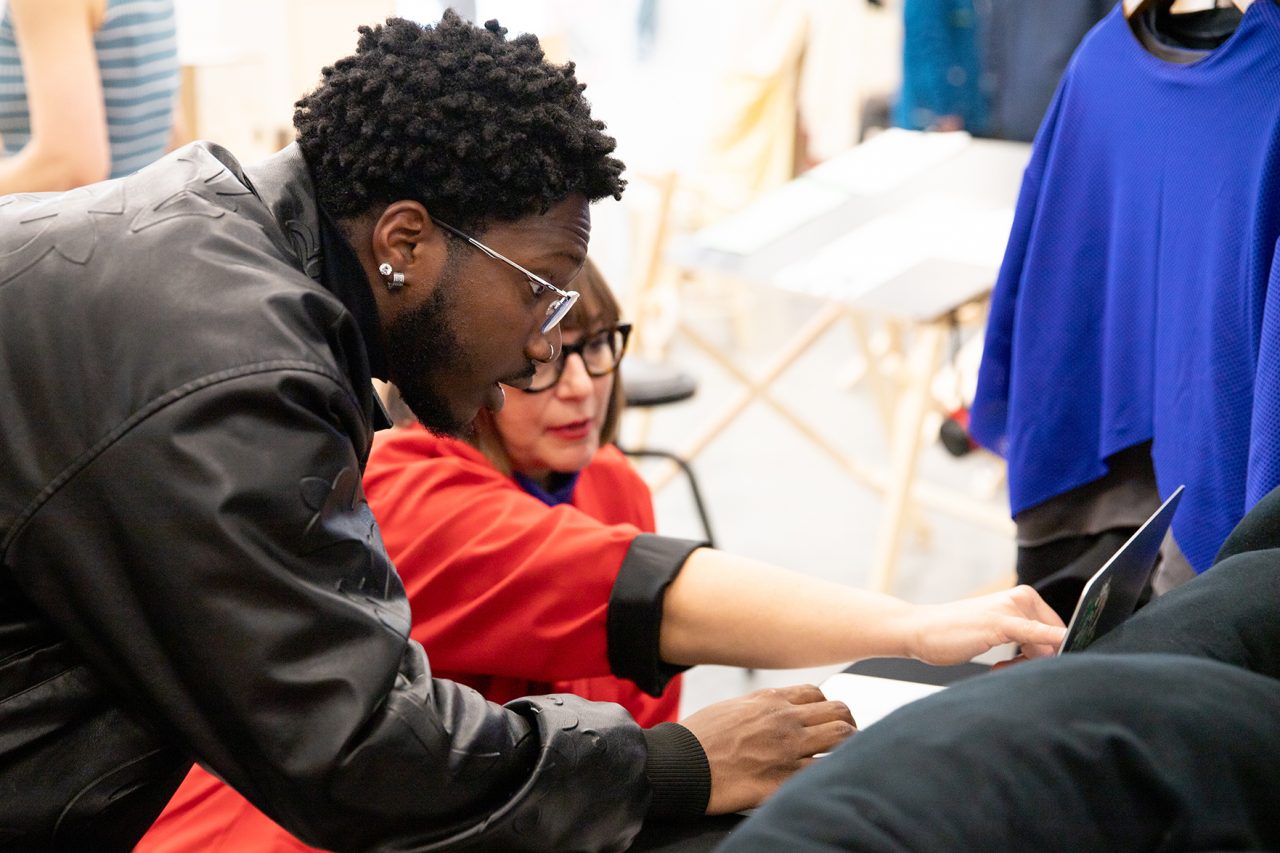
Top: ECU faculty member Charlotte Falk chats with Industrial Design student Yulong (Gerry) Chen about their work at the inaugural Industrial Design Open Studio at ECU. | Bottom: Industrial Design student Adrian De-Heer-Amissah (left) chats with guest Liz Milton at the Open Studio. (Photos by Perrin Grauer)
Industrial Design student Eden Eisses works with recovered ocean plastics. Her capstone project, Tide Toss, results from months spent exploring how to repurpose these salvaged “forever” materials through techniques including weaving, knotting, looming and heat-bonding.
She notes the feedback she received helped reframe her project just as she began finalizing her research.
“It felt very vulnerable to be weeks away from graduating and engage in conversations that could completely change the scope of my project — which in some ways they did,” she says. “But I was extremely happy because design is not an individual process. It’s completely collaborative. It only gets richer when you’re able to absorb critique. It can also be exhausting to feel like you’re taking two steps back, but it’s always in service of ideas converging into something better.”
The Industrial Design Open Studio brought professionals from sectors including participatory design, furniture design, packaging design, fashion design and retail design to the university to chat with students about their work. Students, faculty and alumni from across art and design disciplines were also invited, as were working artists from the local region.


Top: Industrial Design student Eden Eisses (right) chats with a guest at the Open Studio. | Bottom: Eden Eisses' capstone project, Tide Toss, at the Open Studio. (Photos by Perrin Grauer)
Hélène notes the Open Studio is part of a broader series of exercises aimed at helping fourth-year students hone their ability to communicate clearly and concisely about projects they may have spent a year or more developing.
“Students do things like a presentation with a Q&A at the end, a PechaKucha and a three-minute video talking about their work,” she says. “All of these projects and events give them different angles to practice that work of communication. The Open Studio scenario is an intentionally casual encounter. It’s a different way of socializing the work. Bringing in people from outside ECU is also a way to ensure students are beginning to reach out to the community and build those connections.”
Industrial Design student Michelle Qu’s capstone project Of Earth involves capturing natural forms and textures outdoors through mold-making. She then works with those materials in-studio to sculpt design objects, creating a snapshot of place, history and the forces that shaped them, as well as her experience of these things.
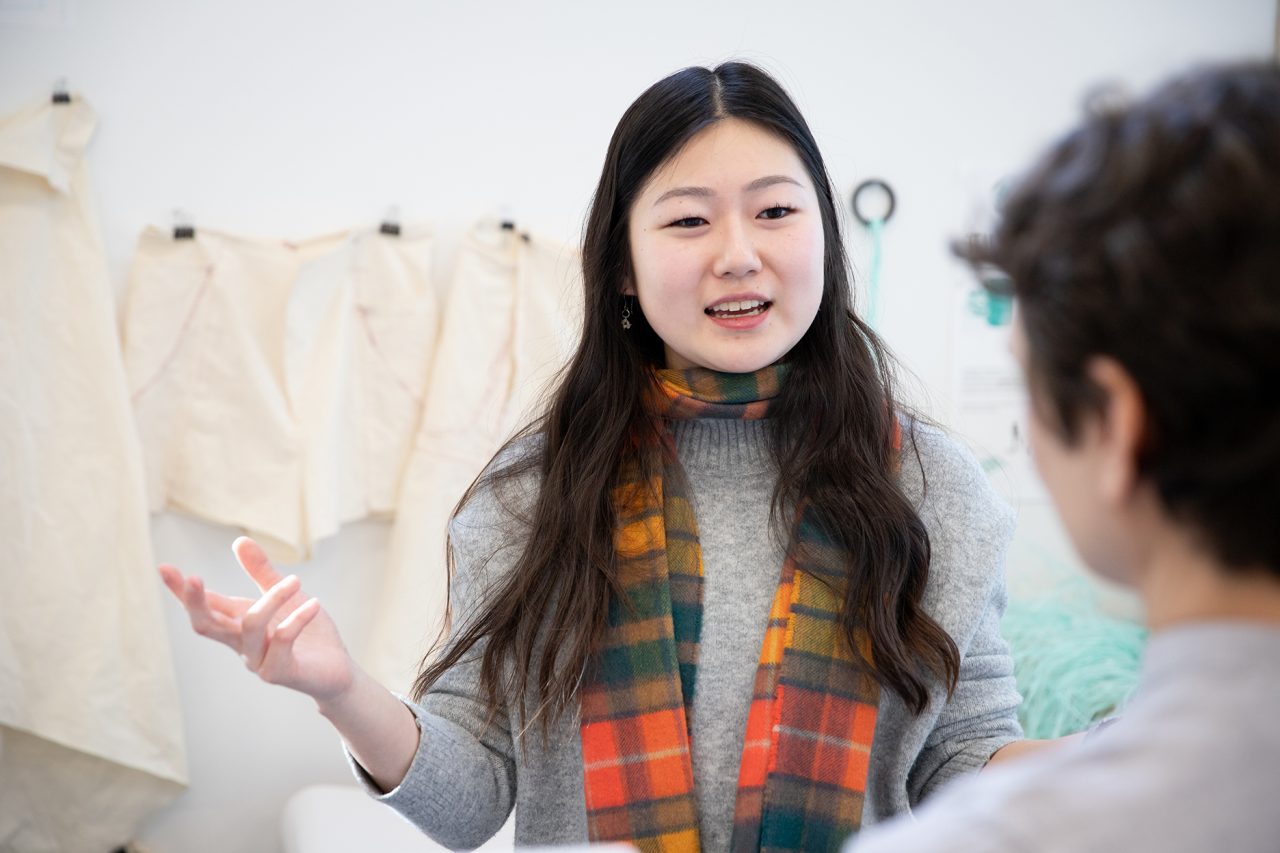
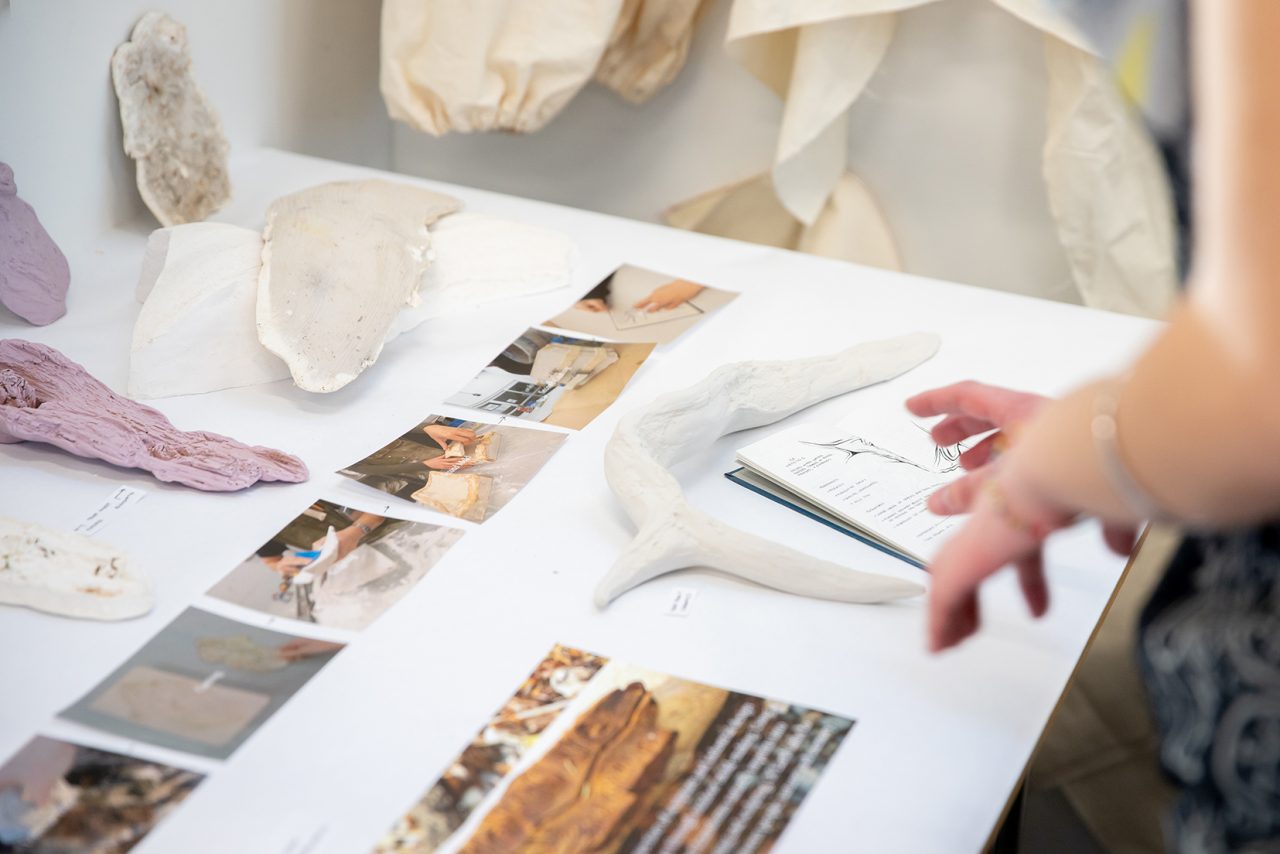
Top: Industrial Design student Michelle Qu chats with ECU faculty member Holly Schmidt at the Open Studio. | Bottom: Work from Michelle Qu's capstone project Of Earth at the Open Studio. (Photos by Perrin Grauer)
Michelle says speaking with a wide range of practitioners helped illuminate her own understanding of her practice.
“It was an excellent opportunity to explain my work to strangers, which I don’t often get to do,” Michelle says. “Many designers were there, but also people from other disciplines, like fine arts and new media. Some of the ways I think about my project might be understood easily by designers. But articulating work in a way that translates outside of design helped me frame my project more clearly.”
Charlotte notes design can be misconstrued as a linear process where designers, positioned as experts, apply their skills to solve clearly defined problems with ideal solutions. But ECU’s Industrial Design program teaches process-based design, where deep material, historical, ecological and sociocultural research determine the shape of a project.
“The way we practice design here at Emily Carr is process-driven and relational. It’s about the work we’re doing through making, researching and experimenting both in and outside of the studio. It’s shaped through building relationships, telling stories, reflecting and collaborating — with attention to materials, systems, and the social and ecological contexts we’re designing within,” she says. “Inviting guests to talk to the students amidst that work — in this lively studio space filled with so many different things — is a chance for unique insights and understanding.”
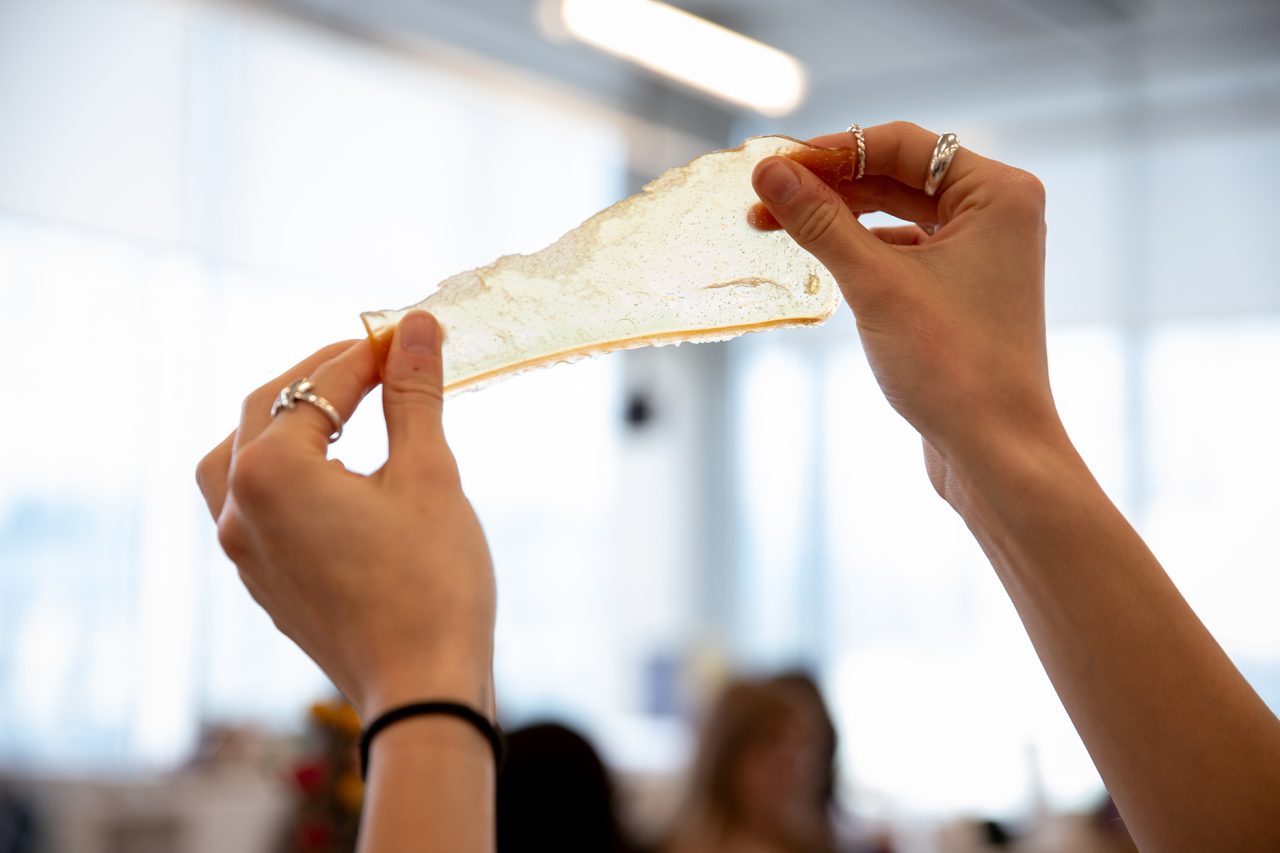
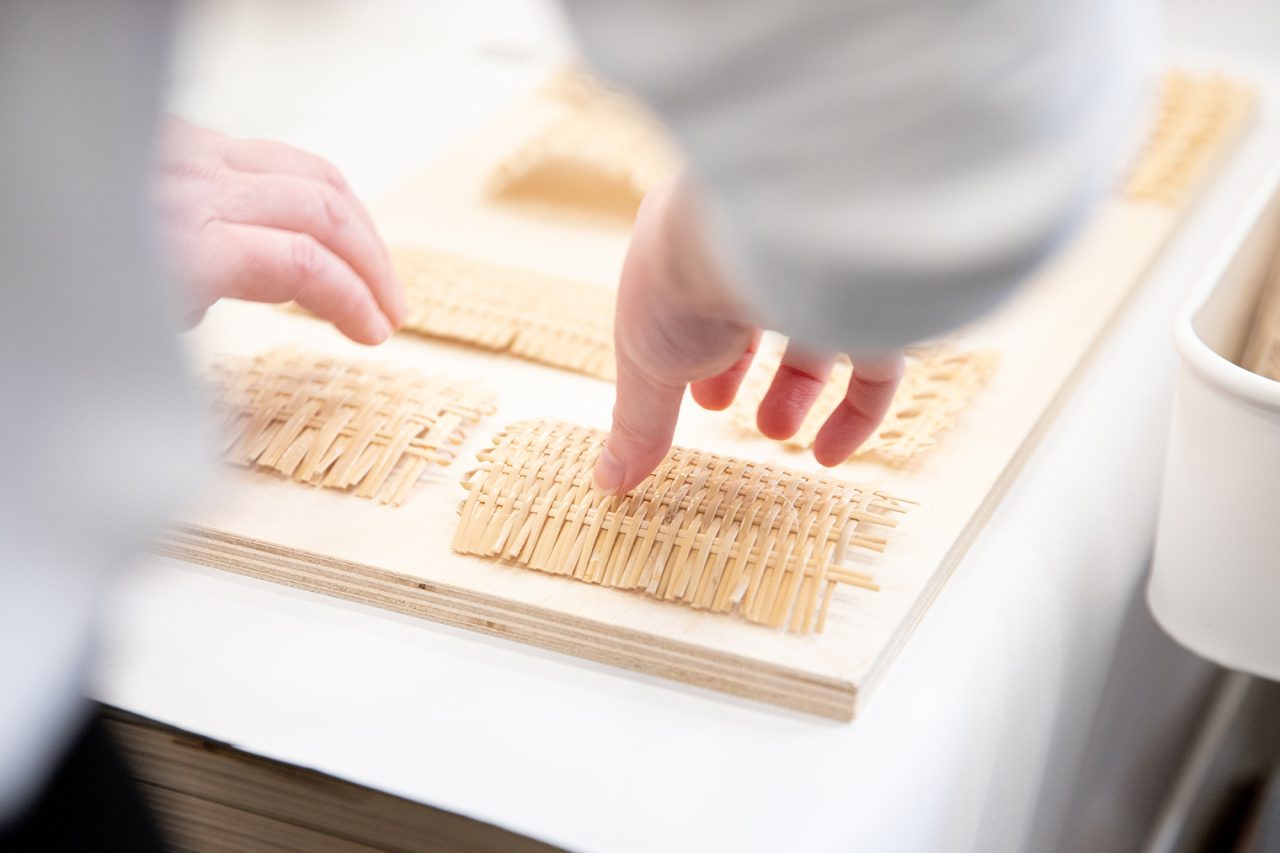
Top: Work by Industrial Design student Adora Buxton at Open Studio. | Bottom: Work by Industrial Design student My Quyen Ong at the Open Studio. (Photos by Perrin Grauer)
Eden agrees, touting the hands-on aspect of the Open Studio as a vital part of the experience.
“It’s really helpful when people are able to touch physical objects and interact with them,” she says. “It also felt important for people to see the unpolished, messy background thinking behind everything, which there isn’t always an opportunity to show. I think it enables a much deeper and more organic conversation. It provoked a lot of interesting insights for me regarding why I’m making what I’m making.”
Don’t miss all the incredible projects by Eden, Michelle and their peers at ECU in May at The Show, Emily Carr’s annual exhibition of work by graduating students.
